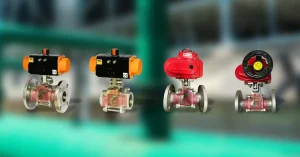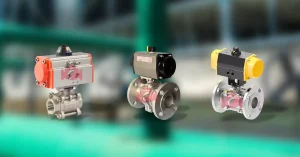What Are The Three Types of Ball Valves?
Ball Valves are essential components in countless industrial and commercial applications, providing reliable flow control for liquids, gases, and other media. These quarter-turn valves use a spherical disc to control flow through the valve body, making them popular choices for their durability and ease of operation.
Understanding the different types of ball valves available can help you select the right solution for your specific application. The three main categories of ball valves classified by their construction method are one-piece, two-piece, and three-piece ball valves. Each design offers distinct advantages depending on your operational requirements and maintenance needs.
One-Piece Ball Valves
One-piece ball valves feature a single, solid body construction where the valve components are permanently assembled together. The ball and seats are inserted during manufacturing, and the body is welded shut, creating a compact, leak-proof design.
Advantages:
- Most cost-effective option
- Compact design saves space
- Excellent seal integrity due to welded construction
- Lower risk of external leakage
- Suitable for applications with limited space
Disadvantages:
- Cannot be disassembled for maintenance or repair
- Entire valve must be replaced if internal components fail
- Limited to basic on/off applications
- Not suitable for applications requiring frequent maintenance
Common Applications:
One-piece ball valves work well in residential plumbing systems, basic industrial processes, and applications where space is limited and maintenance requirements are minimal.
Two-Piece Ball Valves
Two-piece ball valves consist of two main body sections that bolt together, allowing access to internal components. The ball, seats, and stem can be removed by separating the two body halves, making maintenance and repair possible without removing the entire valve from the pipeline.
Advantages:
- Moderate cost compared to three-piece designs
- Internal components can be accessed for maintenance
- Better flow characteristics than one-piece valves
- Available in various port configurations
- Good balance between cost and functionality
Disadvantages:
- More expensive than one-piece valves
- Potential for leakage at body joint
- Limited maintenance capabilities compared to three-piece designs
- May require pipeline removal for major repairs
Common Applications:
Two-piece ball valves are commonly used in chemical processing, water treatment facilities, and industrial applications where occasional maintenance access is beneficial but budget constraints exist.
Three-Piece Ball Valves
Three-piece ball valves feature a centre body section flanked by two end caps, creating the most accessible design for maintenance and repair. The centre section can be completely removed whilst the end caps remain connected to the pipeline, allowing for comprehensive servicing.
Advantages:
- Complete access to all internal components
- Can be fully serviced without removing from pipeline
- Highest quality construction and materials
- Suitable for high-pressure and high-temperature applications
- Longest service life with proper maintenance
- Can be easily upgraded or modified
Disadvantages:
- Most expensive option
- More complex assembly with multiple potential leak points
- Larger and heavier than other designs
- May require more installation space
Common Applications:
Three-piece ball valves excel in critical applications such as petrochemical processing, power generation, pharmaceutical manufacturing, and other demanding industrial processes where reliability and maintainability are paramount.
Choosing the Right Ball Valve Type
The selection between one-piece, two-piece, and three-piece ball valves depends on several factors:
- Budget considerations often drive initial decisions, with one-piece valves offering the lowest upfront cost and three-piece valves requiring the highest investment.
- Maintenance requirements play a crucial role applications with aggressive media or critical processes benefit from the serviceability of three-piece designs, whilst basic applications may only need the simplicity of one-piece valves.
- Operating conditions such as pressure, temperature, and media compatibility influence material requirements and construction standards, often favouring higher-grade three-piece designs for demanding environments.
Making the Right Choice for Your Application
Each type of ball valve serves specific operational needs and budget requirements. One-piece ball valves provide economical solutions for basic applications, two-piece designs offer a practical balance of cost and functionality, and three-piece valves deliver maximum performance and serviceability for critical processes.
When selecting ball valves for your application, consider both immediate needs and long-term operational requirements. The right choice balances upfront investment with lifecycle costs, ensuring reliable performance whilst meeting your maintenance capabilities and budget constraints.
Ball Valves

Ball valves come in three types—one-piece, two-piece, and three-piece—each suited to specific applications. One-piece valves are economical and robust, ideal for basic needs. Two-piece valves offer better maintenance flexibility, while three-piece designs ensure easy servicing, making them suitable for critical operations.
Product Brand: Concorde Valves and Automations
Product In-Stock: InStock
5




